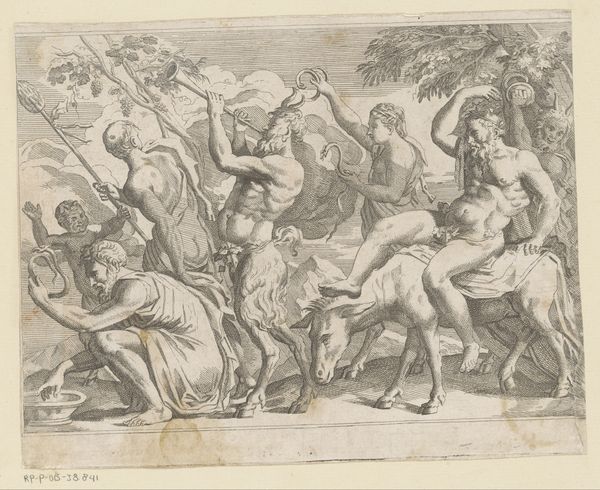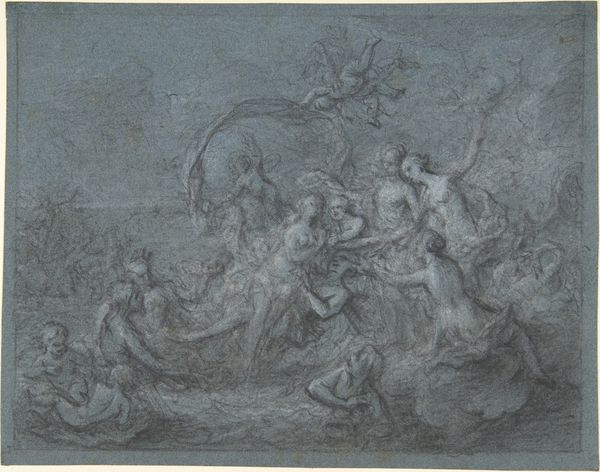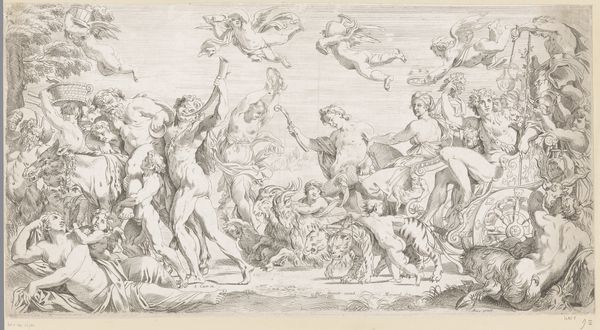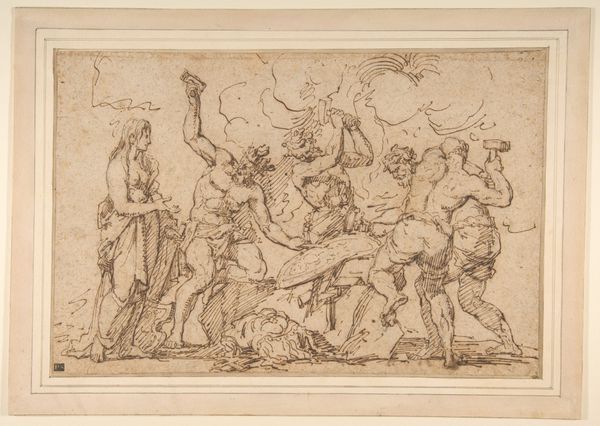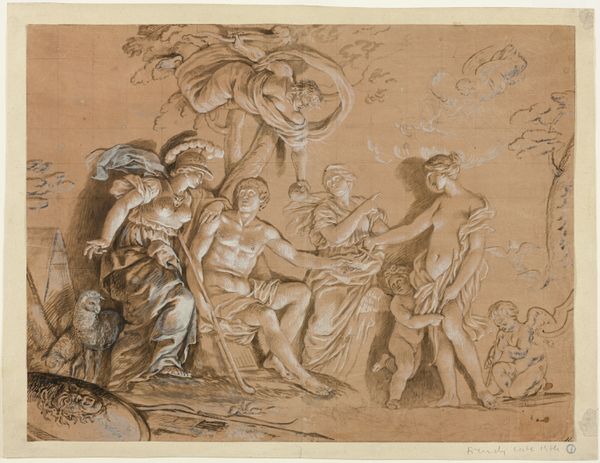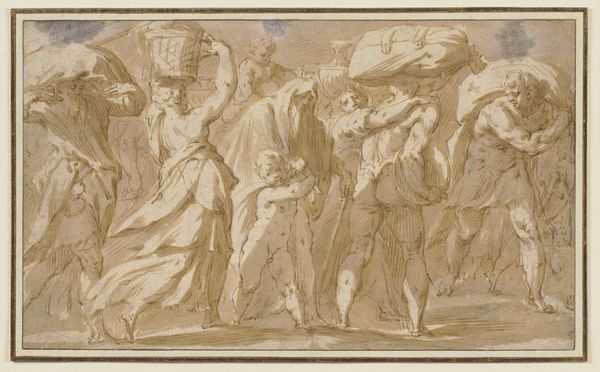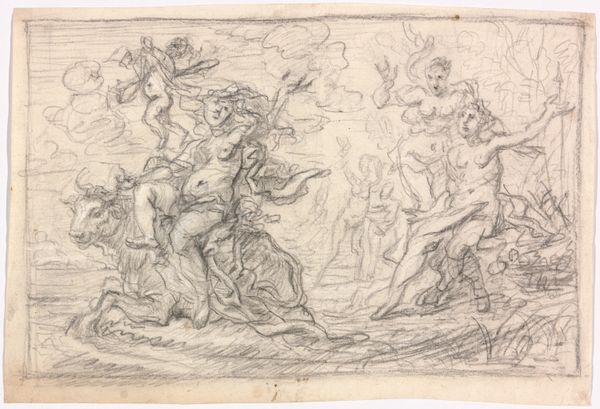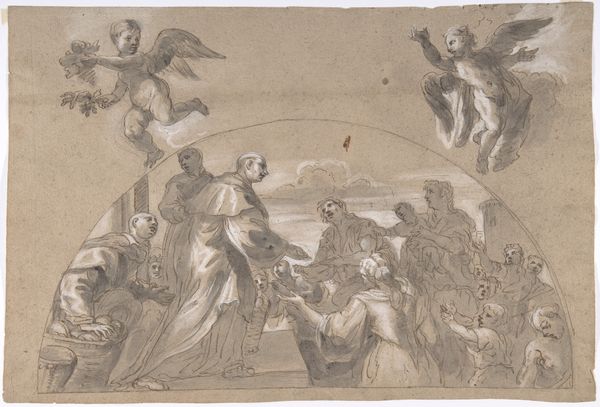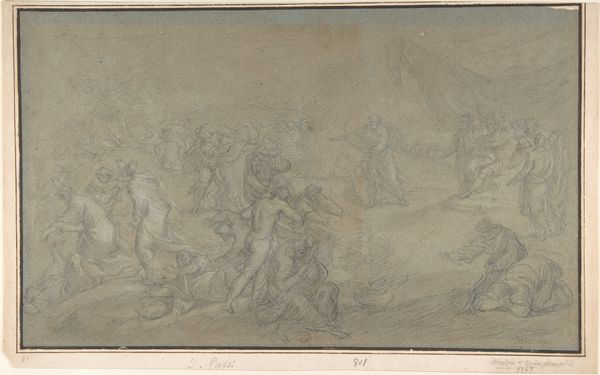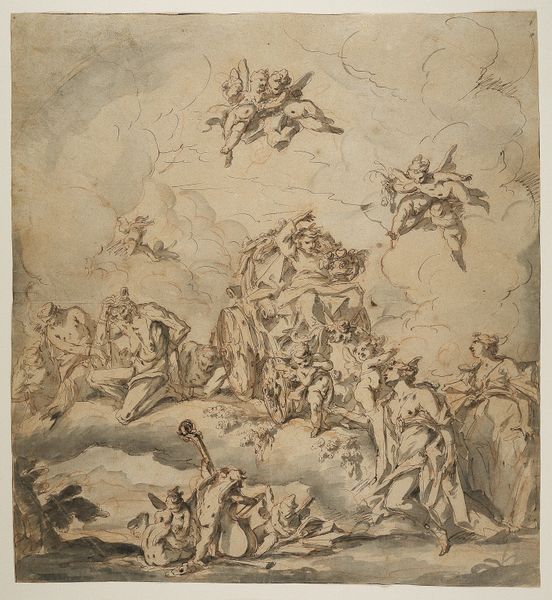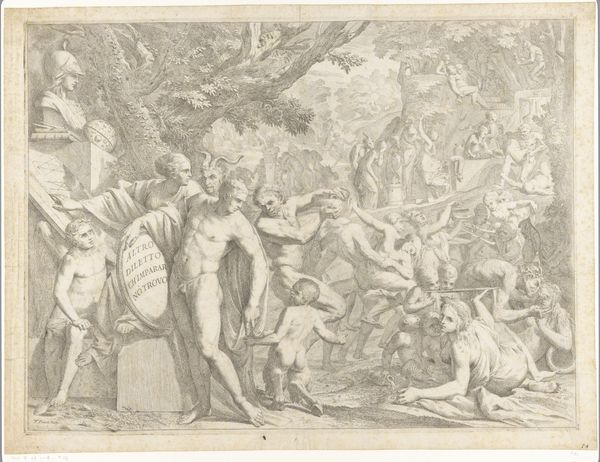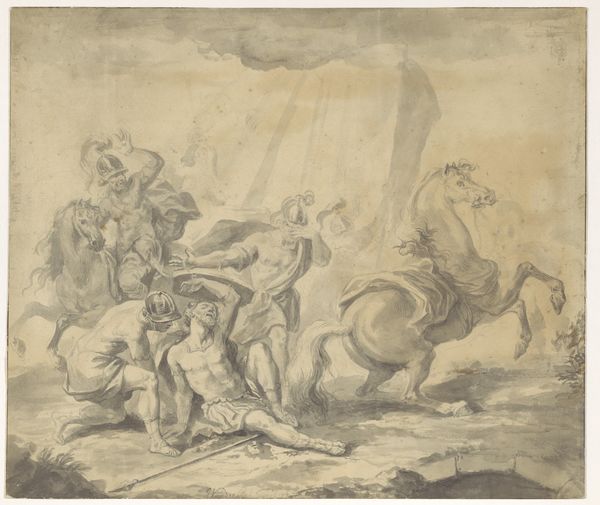
drawing, print, ink
#
drawing
#
allegory
#
baroque
#
ink painting
# print
#
figuration
#
ink
#
angel
Dimensions: sheet: ca. 16 9/16 x 16 15/16 in. (42 x 43 cm)
Copyright: Public Domain
Curator: What a swirling mass of figures! It almost seems about to break free from the constraints of the paper itself. Editor: Indeed. What we are seeing is a drawing entitled “Triumph of the Eucharist," dating roughly from 1640 to 1660. It is held in the collection of the Metropolitan Museum of Art. Though the artist is unknown, the dynamism captures the visual hallmarks of the Baroque style. Curator: Baroque is the perfect descriptor. The movement implied by the upward-reaching figures, the restless drapery, even the musical angels, all converge to create an impression of dramatic ascension. Editor: It’s crucial to consider this within its historical context. The "Triumph of the Eucharist" reflects the Counter-Reformation's emphasis on the Holy Sacrament. The image likely served as a preparatory drawing for a print, perhaps disseminated widely to reinforce Catholic doctrine. Allegorical figures gather around the Eucharist, underscoring its central role. The Church utilized such imagery as propaganda, aiming to visually persuade and inspire faith, reasserting the power of the papacy in a turbulent century. Curator: Looking at the materiality, note the extensive use of ink wash to model forms and generate tonal variation. This imbues the composition with volume, especially observable in the rendering of the horses. Observe too the network of gestural strokes animating the angelic forms hovering above. Editor: It's fascinating to consider how this piece functions within the broader history of religious art. The drawing reflects not just theological positions, but a specific ideological struggle unfolding across Europe. Disseminating printed imagery enabled the church to shape public belief. The paper becomes a ground for solidifying not just faith, but an infrastructure of power. Curator: And even within the smaller details, we find articulations of grander concepts. The upward thrust implies more than visual directionality, but also a metaphor for devotional striving toward the divine. Ultimately, this preliminary rendering suggests an artist captivated by movement, but constrained in capturing his grand design by his materials. Editor: Yes, its significance goes beyond artistry; it reflects the intricate dynamics between art, religion, and sociopolitical control during a critical epoch.
Comments
No comments
Be the first to comment and join the conversation on the ultimate creative platform.
